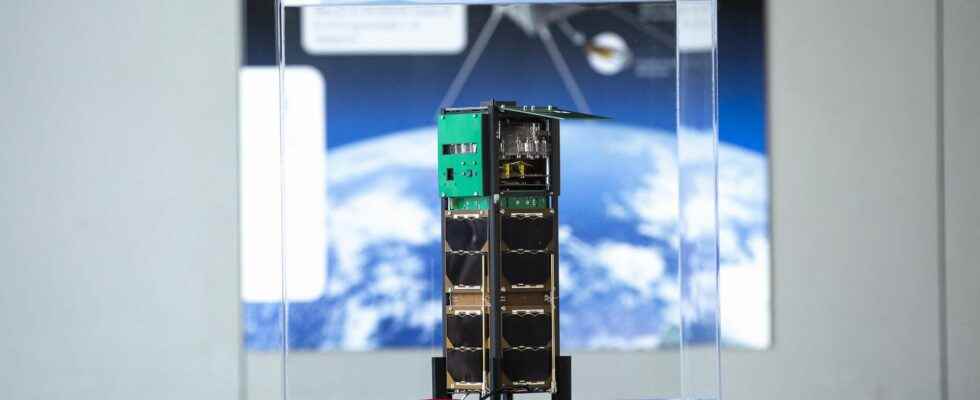You will also be interested
[EN VIDÉO] An extraterrestrial salad tasted on board the ISS For the first time, astronauts ate a salad grown entirely in zero gravity. A historic event immortalized by NASA during this video.
PlantSat is a Chilean university project of the Space and Planetary Exploration Laboratory (Spel) of the University of Chile. It is a nanosatellite weighing nearly three kilos and the size of a water bottle. This is a cubesatthat is, the units of volume – 1U – are cubes of 10 cm sides. PlantSat is a 3U cubesat: 10 x 10 x 30 cm, one third of which is dedicated to the greenhouse.
PlantSat is one of three cubesats from the University of Chile to have been orbit. In reality, they reached space aboard a rocket Falcon 9 from SpaceX 1er april. Like the other two cubesats, PlantSat was held aboard an orbital deployer piloted by Italian in-orbit service company D-Orbit. Once released from the Falcon 9, the orbital deployer moved on its own before ejecting PlantSat into its final orbit ten days later, at an altitude of 550 km. The other two cubesats will be deployed later.
If only a third of the volume of PlantSat is dedicated to the greenhouse, the rest houses all the subsystems that ensure the proper functioning of the cubesat, including its batteries for its power supply, the latter being recharged using small solar panels placed on the sides of the structure.
Simulate living conditions on Mars
The University of Chile has more ideas. The point of this whole experiment is to see how a plant would fare on the surface of our red neighbor. For this, you need an environment with low gravity (on Mars, this corresponds to 40% of the Earth’s gravity) and subject to radiation because the very weak Martian magnetic field provides almost no protection and the low content ofatmosphere acts little compared to that on Earth.
Researchers have found a perfect candidate plant: Tillandsia. It is a small plant that can survive in harsh conditions and with few resources in the peaks of the Andes or in the desert of the Atacama. In addition, this plant does not need to be planted to live. She especially needs a minimum of oxygen, which will be diffused in the greenhouse using an electronic system. According to the University of Chile, there will also be in the small cabin some microorganisms which could degrade and thus bring resources to the Tillandsia.
Complex but essential projects
Independent space greenhouse experiments are rare due to their complexity and need for supply as we can do in the ISS. Among the latest experiments of this kind, we can count the German space greenhouse Eu:Cropisa much larger project (250 kg) from thegerman space agency, and put into orbit at the end of 2018 by a SpaceX Falcon 9. The satellite could regulate its rotation on itself to generate gravity corresponding to different bodies of the Solar System (the Moon or March). Unfortunately, following a computer malfunction, the experiment could not take place.
We also remember the experience of the Chinese space agency on the far side of the Moon with the mission Chang’e 4. They had managed to grow some cotton aboard the lander.
Although particularly complex, all these experiments nevertheless remain very important for the future of manned planetary exploration. They help agencies study how to grow food during a space mission to support the logistics of a mission to Mars, for example. Due to a lack of space to take food for an 18-month mission (minimum time for a round trip to Mars), the astronauts can grow some of their food.
Interested in what you just read?
